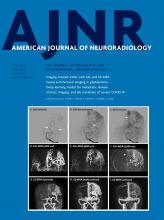The fetal and postnatal development patterns of dural venous sinuses are not fully understood. In their article, published in the American Journal of Neuroradiology in October 2020, Larson et al1 examined the development of dural venous sinuses using MR venography in more than 400 patients. They found that all dural venous sinuses reached their maximum diameters around 5–10 years of age, and the occipital sinus was found in only 2.8% of individuals 16–20 years of age. These findings led the authors to conclude that the occipital sinus disappears gradually from birth to 20 years of age; therefore, it is rarely observed in postnatal life. However, these findings ignore the technical limitations of MR imaging. In another study using MR venography, the occipital sinus was observed in 10% of cases, and it was suggested that artifacts encountered due to flow gaps and the complexity of intravascular blood flow may have caused this low percentage.2 In contrast, human cadaver studies have shown that 90% of individuals have an obvious occipital sinus.3 During the opening of the dura of the posterior cranial fossa, various surgical maneuvers are performed to specifically avoid damage to the occipital sinus and unnecessary bleeding.4 Consequently, the infrequent observation of the occipital sinus in MR venograms is likely related to technical factors, because it is not supported by either anatomic or clinical observations.
Footnotes
Disclosures: Naci Balak—UNRELATED: Employment: Istanbul Medeniyet University, Göztepe Hospital, Istanbul, Turkey.
References
- © 2021 by American Journal of Neuroradiology












